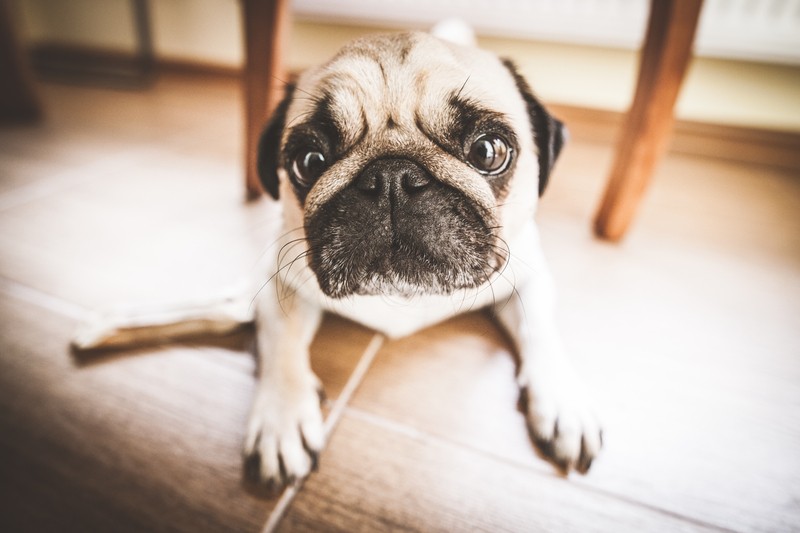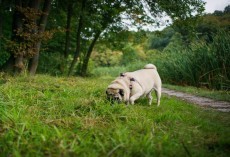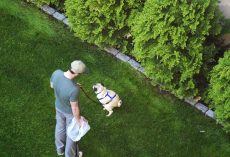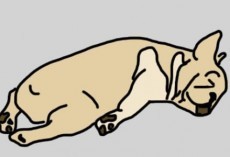You'd be surprised — you may think your Pug is excited when he's feeling rather nervous, or he's happy when in fact he's being shy. It's okay if you don't know everything about your pooch yet, all it takes is you take the time to learn. Soon you'll be a dog body language pro.
In humans, we send body language signals without even thinking about them, and we read them accurately through long experience and a certain amount of innate knowledge.
How often do you watch your dog and read him just as well? Dogs have a rich body language that they use to great effect. We can eavesdrop on what a dog is telling you by knowing a little bit about how dogs behave when they are relaxed, happy, nervous, frustrated or angry.
Standing still may only last for a split second, so you have to watch carefully to see what is happening. When a dog is standing still, he bears his weight in one of three ways:• Feet four-square and balanced. This dog is calm and confident.
• Balanced on his hindquarters. This dog is ready to spring forward, and is confident and willing to interact.
• Balanced in such a way that he can bolt away from you (or what he is looking at).Dogs may stand in a variety of off- balanced ways that show you which way they would like to dart away.
When you look at a dog, it is important to consider his emotional state. Human body language tells us if someone is afraid, confident, or relaxed, and we react appropriately.Wither Do You Wander?
Dogs traveling in straight lines (Photo 4) are more likely to be aggressive, while curved lines of travel (see Collie in Photo 1) indicate a friendly encounter.If a dog approaches you in a direct line, looking aggressive, turn away, keeping one eye on her. You will often see this sort of rude behaviour from adolescent dogs who are trying out assertive behaviour, albeit in the wrong context.
A dog that is moving on a curve does not likely intend harm, although with a large dog, she might knock someone over.
The Rocking Horse Run
When dogs are playing, they run in a very particular way. They move vertically almost as much as they move horizontally, rocking back and forth like a child’s rocking horse. Running in this way is inefficient, and reflects that play is all about fun and games, not about running your friends down and tackling them. (Photo 5)A dog running towards you in this manner is being playful, but it may not be safe—this playful behaviour can be very rough and you can easily be knocked over.
The Eyes Have It
It is said that you can read the soul through the eyes. There is nothing as special as looking at the eyes of someone close to you—you can achieve an instant connection. You can also read a lot about a dog’s state of mind in the shape and look of his eyes.Almond-shaped, relaxed eyes are a reflection of a calm demeanour (Collie in Photo 7). Rounded eyes can indicate arousal and surprise (Chihuahua in Photo 11).
When a dog is actually going to bite, he pulls his lips and tongue back and out of the way so that his teeth can do their work (Photo 13).
A Tail to Tell
As with tongues, tail talk is different than human body language communication. Dogs use their tails the way that people use smiles. The idea that a wagging tail indicates happiness is similar to thinking that every smile means only one thing. A low, fast-wagging tail is like a nervous laugh.A high tail wagging slowly is the confident smile of someone who is going to make you do something you don’t want to do. (Miniature Dachshund in Photo 14)
Do You Hear What I Hear?
Dogs can move their ears independently and almost 180 degrees from the front to the back. In general, consider that the more forward your dog’s ears are, the more confident he is about a given situation. The further back and pinned against his head and neck your dog’s ears are, the more fearful he is. (Photo 16)Pay attention to the general drift of the dog’s ear and as with the tail, the base is more important than the tip.
When you open the door to reading a dog’s body language, you will learn a lot about what they intend, how they feel about their surroundings, and how they interpret your actions.
After you take the time to learn more about your Pug's reactions to certain situations, people, and other dogs, you will understand more about your furry best friend (read more about their body language on Modern Dog Magazine). Better yet, you'll be able to let people know when he's not in the mood to socialize or if he may be feeling nervous. Getting to know your pet is just like getting to know people — it takes a lot of observing, learning, and patience.










